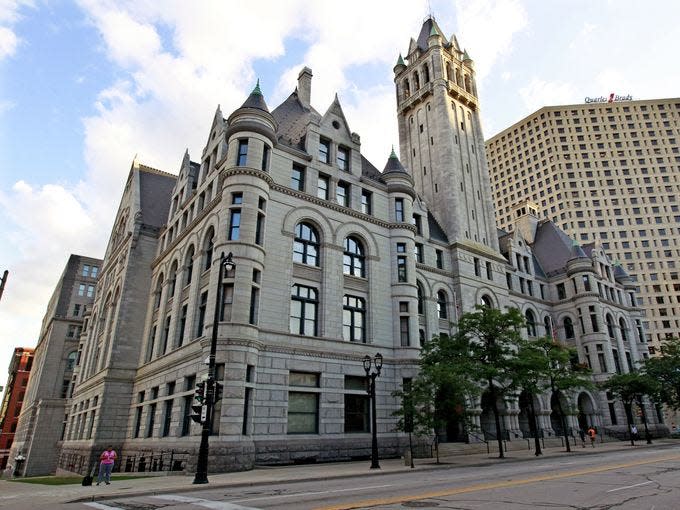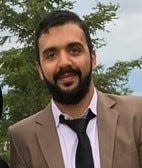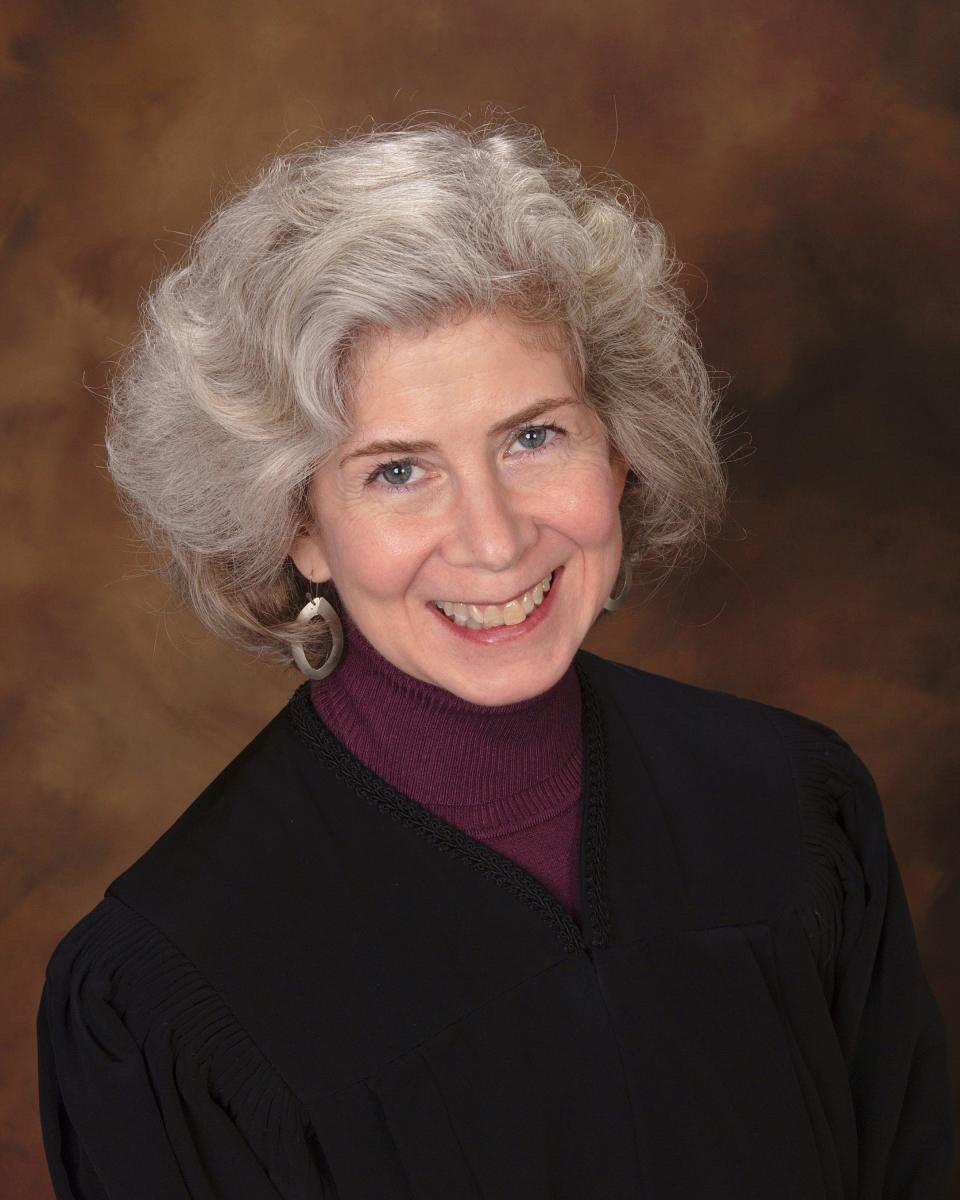Man named in murder plot that targeted Milwaukee Masonic center gets time served
Federal prosecutors still say Samy Hamzeh intended to kill dozens of people in downtown Milwaukee in 2016 with an illegal machine gun, to "defend Islam."
His lawyers say Hamzeh was a pot-smoking goof and a big talker who played along a pair of FBI informants he considered his friends until he thought they might actually be serious. Hamzeh quit the plan and told the pair an imam had told him it was wrong.
Would Hamzeh really have attempted a Masonic hall massacre? Did the FBI go too far in manipulating him to the brink of such a plan? The public may never know for sure.
The case -- which made national news when the FBI announced it had thwarted the attack -- dragged on more than six years. Hamzeh planned to raise an entrapment defense at trial this year, but pleaded guilty in December to possessing an unregistered machine gun that was sold to him by undercover FBI agents.
Chief U.S. District Judge Pamela Pepper on Wednesday sentenced Hamzeh, 29, to time served: the 30 months he spent jailed, and nearly four years he's been out on conditional release.
During that time, he's gotten married, had two children and worked at the same auto glass installation job. He's also been active in his mosque and community and never raised the slightest concern among probation officers monitoring him.

Hamzeh started crying as Pepper announced the sentence, and later hugged his family and his lawyers, Craig Albee and Joseph Bugni.
They called the sentence appropriate and just. Pepper imposed no further supervision and Hamzeh left the courtroom a free man. Albee estimated the government spent $1 million dollars on the case.
"Either the government has had Hamzeh under surveillance and knows he’s a model citizen or he’s not been under surveillance because the government knows he’s not a threat to anyone," they wrote in a sentencing memo.
Prosecutors had sought an extra two years in prison.

They noted Hamzeh toured the Humphrey Scottish Rite Masonic Center, 790 N. Van Buren Street in January 2016 then laid out a plan for who should be killed there in what order, "in graphic, homicidal detail."
A few days later, he and the informants met who Hamzeh believed were illegal arms dealers in rural Wisconsin and paid the extremely discounted price of $570 for two machine guns and a silencer. Once he took the weapons, Hamzeh was arrested.

In a sentencing memo, Assistant U.S. Attorney Benjamin Taibleson wrote the purchase was "a substantial step toward the mass murder" Hamzeh had in mind.
Hamzeh knew gun possession alone would be a much lighter sentence. He suggested if the group were caught before the attack, they should tell police they just were intrigued with having a machine gun to shoot for fun, according to Taibleson's memo.
RELATED: Man accused of mass shooting plot in Milwaukee wins a sliver of freedom
"Hamzeh’s life does not bear the markings of someone who was bent on mass murder; it bears the markings of an immature and insecure young man, who was the victim of his own big mouth and his own cunning friends," Albee wrote in his sentencing memo.
After months of recording discussions with Hamzeh, mostly in Arabic, the informants stopped toward the end of 2015.
"Thirty-five days elapsed between Hamzeh shutting the door on (one of the informant's) overtures to get a machine gun, and the first recorded conversation about the Masons," Albee wrote. "Those thirty-five days are key. And we don’t have them."
He notes the government claims it became "too labor intensive," to continue recording, yet over two weeks in that 35-day span, the FBI had six to eight agents at a time surveilling Hamzeh over 22 eight-hour shifts.
Federal prosecutors did not address the issue in their sentencing memo. They focused on recordings the informants did make, in which Hamzeh tells his assumed co-plotters " ... I want to ensure that everybody dies, meaning, if anyone lives, he will talk with the police – right away."
And this: "If one of us gets wounded, we will keeping on shooting until we all die."
And, “If I got out, after killing 30 people, I will be happy 100 percent … 100 percent happy, because these 30 will terrify the world.”
Trying to adapt in U.S
According to court records:
Hamzeh was born in New Jersey, but moved to Jordan with his family at age 2.
In his teens, he moved alone to Chicago, then to Milwaukee, where he worked installing auto glass and in a restaurant. His parents followed him to Milwaukee in 2013 and he moved in with them.
In 2015, he was 23 and had been living in the U.S. for four years. By then, his good friend, identified only as Steve, a Jordanian, and Steve's uncle were having some legal problems, according to the defense. Steve had motive to try to help the FBI, and decided to exploit Hamzeh to do so.
Steve told the FBI Hamzeh was talking talked about going to Israel to kill Jews.
His lawyers describe the young Hamzeh as "gullible, an attention-seeker, and susceptible to being manipulated." He had no criminal record, or history of political or religious activism, nor shown any interest in guns.
After Hamzeh's arrest, Steve refused his FBI payments, suffered a mental breakdown and had to be hospitalized. The defense says a logical explanation is " that he knew he’d betrayed an innocent friend."
Once Steve had gone to the FBI suggesting Hamzeh might a danger, he began recording hundreds of hours of their discussions, mostly in Arabic, over several months.
The FBI also introduced a professional informant to the restaurant where Steve and Hamzeh worked. The informant, referred to as Mike, befriended both men. Neither knew the other was working with the FBI before Hamzeh's arrest in January 2016.
Why target Masonic center?

It was Mike, according to Hamzeh's lawyers, who persistently tried to get Hamzeh interested in guns, discussing them often and taking Hamzeh to a gun range for the first time.
It was also Mike who introduced the idea that Masons supported the Islamic state, according to Hamzeh.
"There is no indication that Hamzeh knew anything about the Masons before January 2016, while there is abundant evidence that Mike was infatuated with them. Recall: he went so far as to become a member," the defense memo reads.
"It would be a striking coincidence for Hamzeh to have chosen (at random) a group to attack that Mike just happened to also be infatuated with."
According to court records, Hamzeh watched YouTube videos espousing the false belief Masons secretly support the Islamic State, which through its terrorism was discrediting Muslims. The assertion led Hamzeh's group to target the Masonic center in Milwaukee.
An MC Escher drawing
Pepper, the judge, said both the government and defense cited true facts of the case, but saw them through vastly different lenses.
"This case is a bit like an M.C. Escher drawing," she said. "You see different things from different angles."

Pepper called Hamzeh's language in the recordings vile and horrific. She said if he truly intended to carry out a mass shooting, five years in prison would be far too light of a sentence.
If he was just going along with gun purchase as a conciliatory move to his friends, after changing his mind on the attack, Hamzeh's punishment has already exceeded what he'd get for possessing a machine gun without the terror attack context, Pepper said.
Pepper concluded the preponderance of the evidence did not support the former, largely because Hamzeh had so adamantly withdrawn from the shooting plan, telling his friends it was wrong, he was out and they shouldn't do it either.
She recalled when she decided to release Hamzeh from pretrial detention in 2018, after the government still hadn't translated the hundreds of recording talks, she said a little prayer.
"I said, 'Please don't let me be wrong about this young man, and please let his family love him enough to not prove me wrong," Pepper said.
"It seems this experience made him think differently about his approach to life," she said.
Contact Bruce Vielmetti at (414) 224-2187 or bvielmetti@jrn.com. Follow him on Twitter at @ProofHearsay.
This article originally appeared on Milwaukee Journal Sentinel: Man in plot to kill dozens at Milwaukee Masonic center avoids prison

